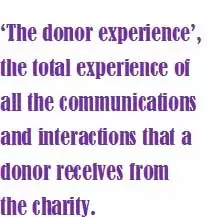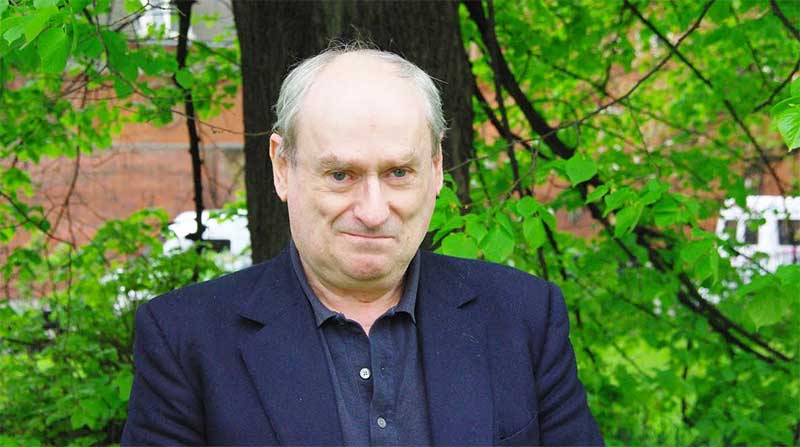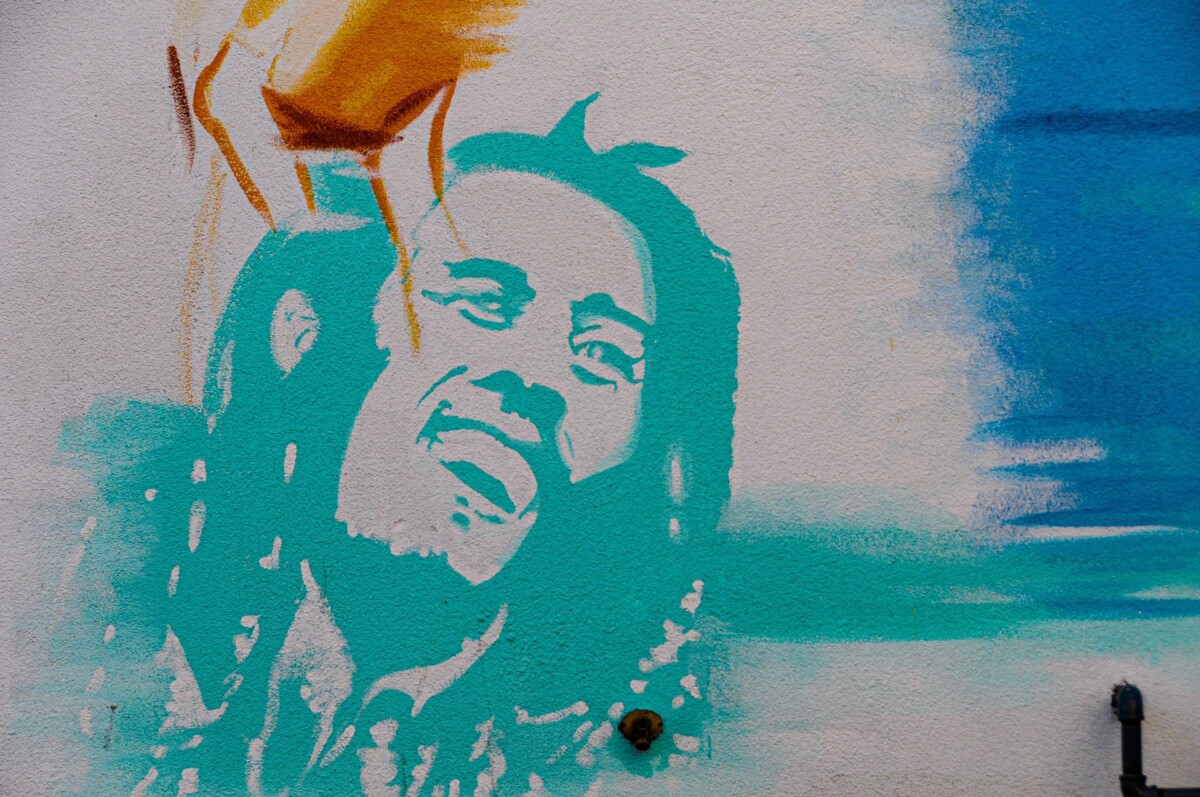7 things I would do differently if I were an appeals director now
During the thirty years that I was appeals director at NSPCC I tried very hard to introduce a donor-centred view of fundraising.
Now, five years since stepping down from that role as head of one of Britain’s largest and most innovative fundraising teams, on reflection I can see a lot that I should have done differently.
This is not so much about leadership or management as it is about fundamentally changing our approach to fundraising.
Advertisement
1. Create and implement a clear vision for fundraising leadership

This is one thing I would fundamentally do differently. As a leader, it is my job to create, with appropriate consultation, the vision for fundraising. Not the fundraising strategy, which is necessary but not sitting on everyone’s desk, but the vision. It should be donor centred and fill just one side of A4.
Then, my main job would be to embed that vision throughout fundraising.
2. Improve the donor experience
When Mercedes market a new car, they focus on the car, the Mercedes experience, not the need for Mercedes to make money. What we are marketing is all the communications that make up the donor experience and how that permits and shapes the work we do. Those who focus on marketing the charity, the cause or even the good work being done miss this simple truth. That donor experience would be the core of my vision.

The idea of the donor experience emerged from a lunch I had with Ken Burnett. I had often said that what we are ‘selling’ to donors was the good feeling that donors get when they have given to a charity. Ken re-labelled that as ‘the donor experience’, the total experience of all the communications and interactions that a donor receives from the charity. We will be hearing a lot more about the donor experience in the future (Ken’s series of articles on the theme can be seen here.)
So, I would immerse myself in the charity’s fundraising. Spending time with all those who have contact with donors, not just meeting people, but seeing and doing their work. Working with the teams responsible for outbound telephone, inbound telephone, in-house supporter services, etc. Seeing all the communications that go to donors. Then, doing the same for community fundraising, corporate fundraising, etc.
This of course is a big undertaking that would need to be done properly as it’s crucial to understanding to what extent current activity is consistent with the vision. While doing all of the above, every time I look at a communication with a supporter, I would ask myself how the donor would feel after the experience of that communication; how it would enhance the donor experience.
I am fairly confident that I would find a huge disconnect in many quarters between the vision for fundraising and actual practice. Because we hadn’t made real the 90 degree shift from thinking about the needs of the charity to thinking about the needs of the donor.
3. Make the first ‘thank you‘ perfect

The thank you letter/welcome pack is the most important communication we send. Someone who, probably, has seen our recruitment material many times before, has decided to donate. She will wonder if she has made the right decision.
The first thank you is vital in reinforcing the donor’s decision to give and to making her feel special. But it takes some organisations a fortnight or more to send a response and some charities don’t send a response at all. The thank you needs to be special and quick.
I would chair a cross-departmental working group in our charity to look at how we get the first thank you/welcome pack out within 48 hours. If we can do that, we’ll be four times more likely to deserve a second gift.
4. Measure and reward long-term performance, not just short-term
I became used to, and part of, a culture where each year, department by department, we would set the annual budget. And even a monthly cash flow. Income was monitored monthly, with variances needing to be explained. The very walls of our offices whispered “budgets”. Looking back on it now, it was mad.
I would work to change the culture, throughout the charity, to focus on five/ten year results, as well as monthly/annual results. Charities are acting in the best interests of their beneficiaries if they think with a five/ten year time horizon, as well as one year.
I accept this would be a time-consuming process. Lots of meetings, and in each case the opportunity to reflect and consider. You don’t achieve change like this in a single meeting. I would marshal my facts and work my way through the hierarchy from CFO to the full board of trustees. Some meetings would be difficult. But if I had got my facts right, any reasonable and intelligent person could not fail to buy into the idea. This would fundamentally change the culture, and get everyone seeing fundraising as an investment, not an overhead.
But I wouldn’t suggest seeing five/ten year results as an alternative to keeping tight control on cash within the year, because that is vital to keeping the charity afloat.
All easier said than done, of course. But when I had that job, I can now see that I never systematically went through the process. I would now.
5. Consider satisfaction as the key measure of Lifetime Value

The key driver of LTV is donor satisfaction; how good is the donor experience. And measuring and influencing that can and should be within our control.
Professor Adrian Sargeant carried out a satisfaction survey of all our types of donor to get a satisfaction index across all our fundraising. Regrettably we didn’t really do anything with it, except expect it to increase as we became more donor focussed.
Now, I would get all my direct reports to think about specific measures they and their teams could introduce that would be the key indicators of donor satisfaction in their area. There would have been zero resistance to this, I’m sure. People wanted to be more donor centred and would have been delighted to be asked to think about measuring it, if they knew it would be taken seriously.
Adrian Sargeant and Roger Craver have each produced a remarkably similar list of seven drivers of satisfaction. They are all within our control. I would work with my senior team, to agree our own list of drivers from these two lists, and refine one key set of actions we should all take to improve each driver of satisfaction. Each department would create their next annual plans on the basis of what each member was planning to do to make the action list real. This would help to create a culture whereby the donor experience is key.
6. Spend at least as much on retention as we spend on recruitment
We spent a fortune on recruiting new donors. We even had a stewardship department, to try to make stewardship of donors key. Nevertheless, we spent relatively little on retaining donors and accepted attrition as a fact of life. I believe we were wrong.
I would have invested serious money on retention. Some of the changes needed are cultural and systemic and can be made without increasing costs. Some are strategic, structural and organisational. But I would follow the mantra that the more we create a good donor experience, the longer donors would stay and the more they would give.
I would empower all donor-facing staff to improve the donor experience, and resolve most enquiries and complaints. This may involve treating these staff as fully fledged fundraisers, with adjustment of salaries if necessary. This would also involve changing the method of working of telephone fundraising staff. Or I would bring my outbound TFR in-house. Scripted telephone calls take 6 minutes. Unscripted, donor led calls can take 21 minutes. Immediately three times the staff, each now being paid more. In TFR, you don’t buy the cheapest offering.
7. I’d keep my head in the clouds and my feet firmly on the ground
We are led too much by data and spreadsheets and not enough by the donor experience we need to create.
I would get the relevant staff to focus on the content of our communications with vigour. And I would get involved myself. Every communication that didn’t work to enhance the feelings donors had, would be changed. This needs to be fed through to appraisals, which should be as much about the donor experience, using the measures we had identified above, in the section on satisfaction, as about income.
I said at the beginning that this blog is not about leadership and management. But doing all the above would not be about bringing key decisions into the centre, it would be about empowering managers to take the consequent decisions .
Encouraging innovation and encouraging failure as before. But within a different paradigm.
Giles Pegram joined the NSPCC as appeals director and subsequently set up the highly successful 1984 Centenary Appeal, which raised £15m, a record at the time in the UK. Additionally, through adopting a donor-centric approach to fundraising, he grew the NSPCC’s income from donors and supporters from £3m pa to £145m pa (of which £85m came from regular givers) whilst the ground-breaking FULL STOP Appeal raised £274m to kick start the Society’s campaign to end cruelty to children. Giles continued as Appeals Director until 2010. He is now a freelance consultant. Giles was awarded the CBE in 2011.
© Giles Pegram 2015.






